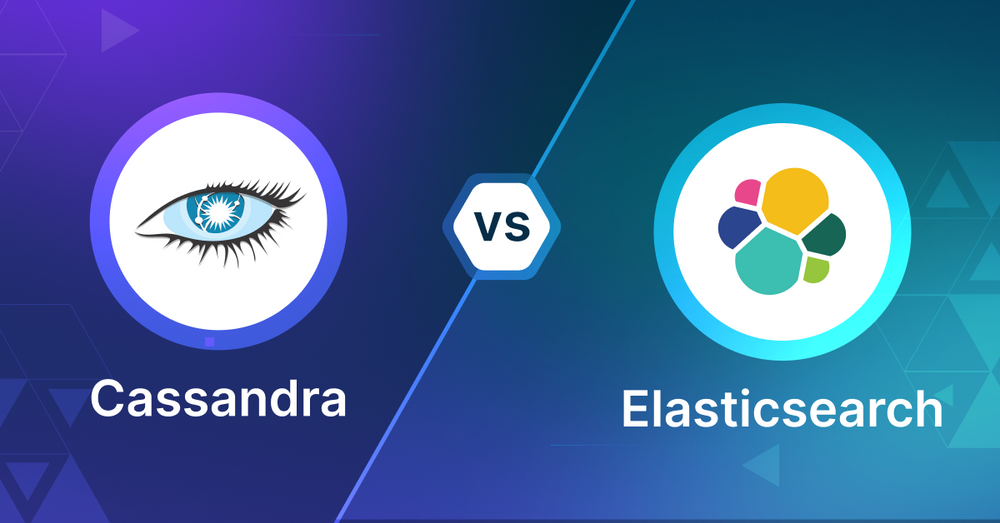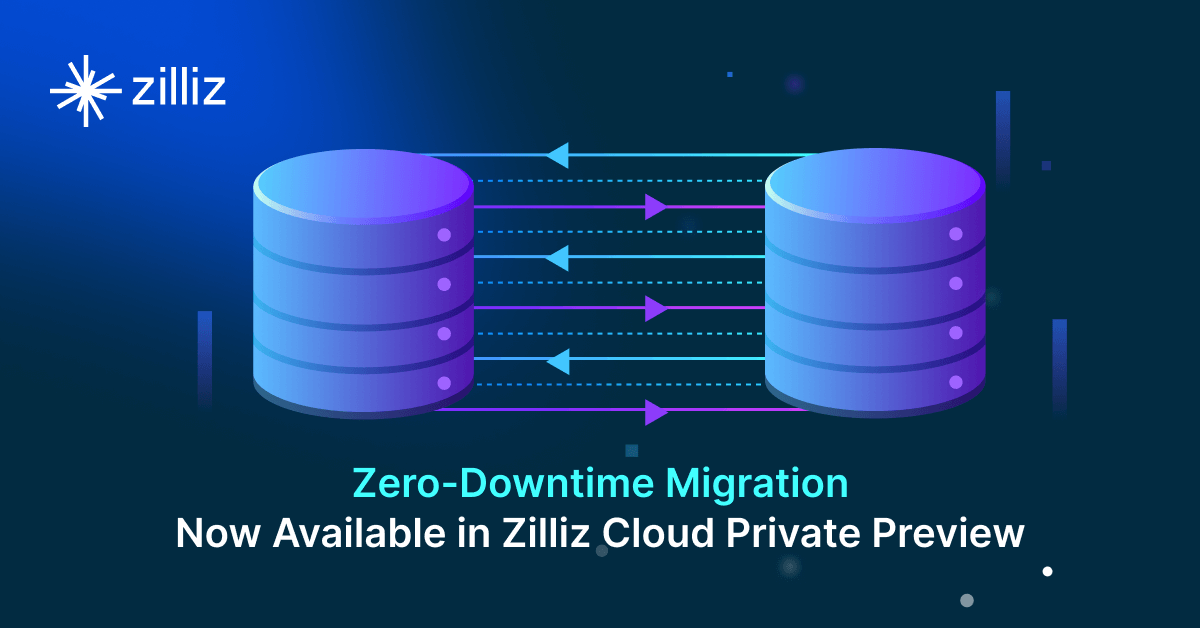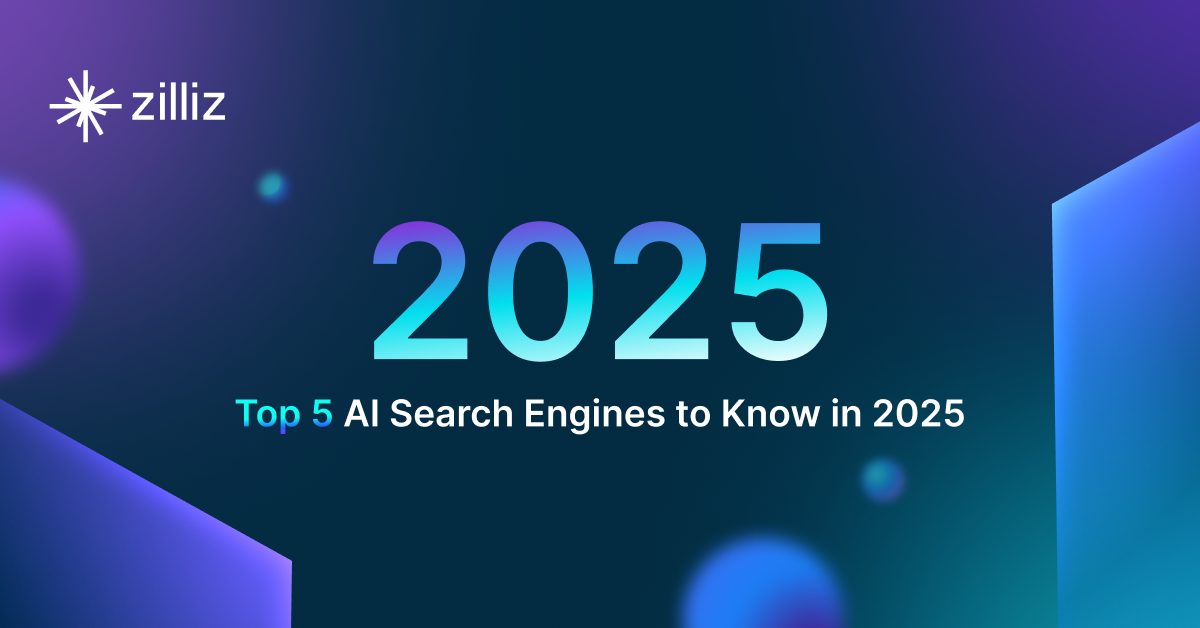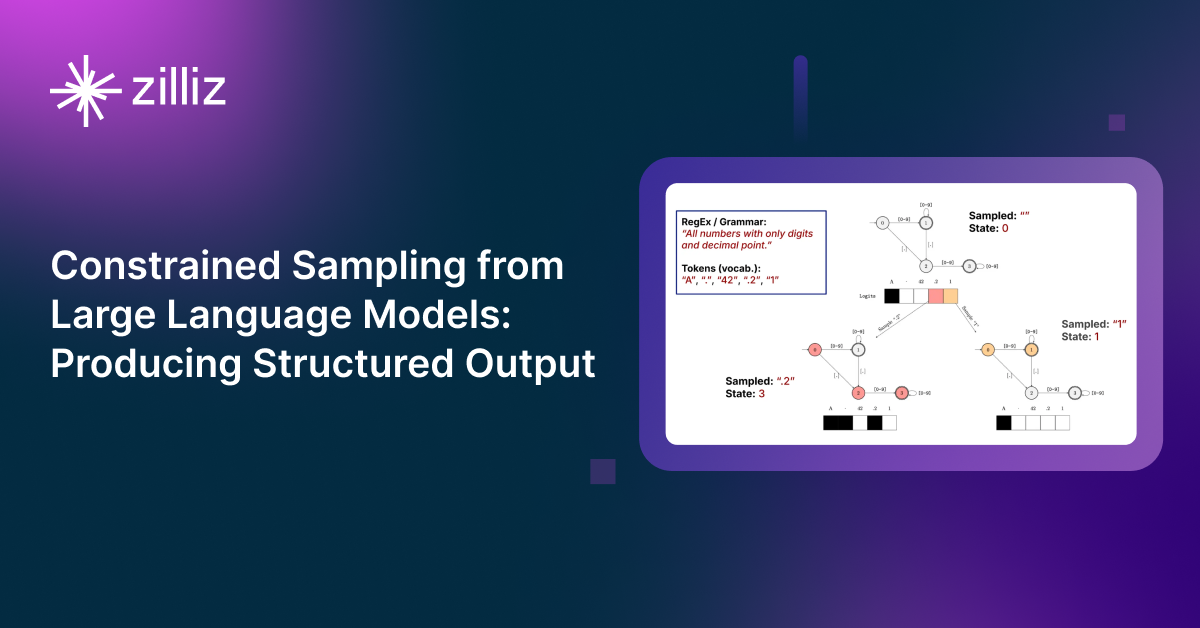Apache Cassandra vs Elasticsearch: Choosing a Vector Database for Your Needs

Today, data and search technologies have become essential for modern applications, powering everything from recommendation systems to autonomous vehicles. The rise of data-driven technologies has led to the increasing adoption of vector databases, which are designed to store and retrieve high-dimensional vectors.
Two prominent choices for vector searches are Apache Cassandra and Elasticsearch. Both of these systems have evolved to support vector search, which is key to handling complex AI-driven tasks. However, they each have their own strengths, weaknesses, and ideal use cases. In this article, we’ll explore their differences, helping you make an informed decision based on your vector database needs.
What is a Vector Database?
Before we compare Apache Cassandra and Elasticsearch, let's first explore the concept of vector databases.
A vector database is specifically designed to store and query high-dimensional vectors, which are numerical representations of unstructured data. These vectors encode complex information, such as the semantic meaning of text, the visual features of images, or product attributes. By enabling efficient similarity searches, vector databases play a pivotal role in AI applications, allowing for more advanced data analysis and retrieval.
Common use cases for vector databases include e-commerce product recommendations, content discovery platforms, anomaly detection in cybersecurity, medical image analysis, and natural language processing (NLP) tasks. They also play a crucial role in Retrieval Augmented Generation (RAG), a technique that enhances the performance of large language models (LLMs) by providing external knowledge to reduce issues like AI hallucinations.
There are many types of vector databases available in the market, including:
Purpose-built vector databases such as Milvus, Zilliz Cloud (fully managed Milvus)
Lightweight vector databases such as Chroma and Milvus Lite.
Traditional databases with vector search add-ons capable of performing small-scale vector searches.
Both Apache Cassandra and Elasticsearch are traditional databases that have evolved to include vector search capabilities as an add-on.
What is Apache Cassandra?
Apache Cassandra is an open-source, distributed NoSQL database that excels at handling large volumes of structured and unstructured data with high availability and fault tolerance. Originally developed by Facebook to manage massive workloads, Cassandra is known for its ability to scale horizontally across multiple servers, with no single point of failure.
Cassandra's architecture is decentralized, meaning that all nodes in the database cluster are equal, and data is distributed across these nodes using a partitioning model. This allows Cassandra to store vast amounts of data and retrieve it with low latency. While Cassandra has traditionally been focused on handling large-scale write operations, it now supports vector embeddings and vector similarity search with the release of Cassandra 5.0.
By integrating vector search, Cassandra has broadened its utility, making it a suitable option for applications involving AI-driven tasks such as recommendation systems, image recognition and rearch, and natural language processing.
What is Elasticsearch?
Elasticsearch is an open-source search engine based on the Apache Lucene library. It is widely known for its real-time indexing and full-text search capabilities, making it a popular choice for search-heavy applications and log analytics. Elasticsearch allows users to search and analyze large amounts of data quickly and efficiently.
Elasticsearch was designed specifically for search and analytics, offering advanced search features like fuzzy searching, phrase matching, and relevance ranking. It excels in scenarios where complex search queries and real-time data retrieval are needed.
With the increasing demand for AI applications, Elasticsearch has expanded its capabilities to include vector searches, enabling it to process similarity searches and semantic search, which are essential for AI tasks like image recognition, document retrieval, and Generative AI.
Apache Cassandra vs. Elasticsearch: Key Differences
While both Apache Cassandra and Elasticsearch now support vector search, they differ significantly in how they handle data, scale, and perform. Let’s explore these key differences to help you make the right choice.
Search Methodology
In Apache Cassandra, the primary focus is on fast, scalable write operations. It is a NoSQL database first, and its vector search capabilities are relatively new, targeting applications that need efficient retrieval of high-dimensional data based on similarity.
On the other hand, Elasticsearch is a search engine at its core, and its search methodology is built around real-time indexing and retrieval of large data sets. Its full-text search capabilities are unmatched, and its vector search implementation is more mature, making it a better fit for search-heavy tasks.
Data Handling
Apache Cassandra is optimized for handling structured and semi-structured data, with a strong focus on handling write-heavy workloads. It uses a partitioning scheme that distributes data evenly across nodes, ensuring fast retrieval times, especially in applications that demand high availability and throughput.
In contrast, Elasticsearch excels at handling unstructured and semi-structured data, particularly in scenarios where real-time indexing and retrieval are needed. It is optimized for read-heavy applications, such as search engines, log analytics, and monitoring systems.
Scalability and Performance
When it comes to scalability, Apache Cassandra stands out with its ability to handle massive amounts of data distributed across many nodes. Its write performance is excellent, and it can scale horizontally by adding more nodes, without the need for complicated configurations or master nodes.
Elasticsearch also scales horizontally, but it is more focused on real-time search performance. It can handle large datasets effectively, particularly when the need is for fast search and analysis, though its performance may be more read-optimized.
Flexibility and Customization
Cassandra offers flexibility in terms of data modeling, allowing users to design schemas that suit their specific application requirements. However, the flexibility comes with a need for careful planning, as poorly designed schemas can impact performance.
Elasticsearch, by contrast, provides extensive customization options for search queries. Its flexibility shines in search functionality, allowing users to perform complex queries, ranging from full-text searches to vector-based similarity searches.
Integration, Ecosystem, and Community Support
Both Apache Cassandra and Elasticsearch have robust communities and ecosystems.
Cassandra is supported by a strong open-source community and offers integrations with big data tools such as Apache Spark and Hadoop. Commercial support, such as that provided by DataStax, adds additional enterprise-level features.
Elasticsearch is backed by Elastic, the company that develops and maintains the project. It has a vast ecosystem with tools like Kibana for visualization and Logstash for log processing. Its integrations with popular tools and platforms make it a versatile choice for search, analytics, and logging.
Ease of Use
Cassandra has a steeper learning curve, particularly in designing efficient data models and managing large clusters. Its operational complexity can be a challenge for teams unfamiliar with distributed databases.
In contrast, Elasticsearch is generally considered easier to set up and use. Its RESTful API makes it accessible to developers familiar with modern web development, and it has a wide array of tools for monitoring and managing clusters.
Cost Considerations
Both technologies are open-source, but operational costs differ.
With Cassandra, costs can rise due to the need for large clusters and complex maintenance. Managed services like DataStax provide enterprise-level support, but at a higher cost.
Elasticsearch offers an open-source version, but Elastic provides commercial licenses for advanced features such as security and cluster management. Managed services through Elastic or cloud providers can simplify operations but may also add to the cost.
Security Features
Both Cassandra and Elasticsearch provide strong security features, including encryption and role-based access control.
Cassandra supports encryption both at rest and in transit, with customizable options for authentication and authorization, making it suitable for use in environments that prioritize security.
Similarly, Elasticsearch offers encryption at rest and in transit. Additional security features such as role-based access control (RBAC) and audit logging are available through Elastic’s enterprise licensing.
Data Privacy and Compliance
When it comes to data privacy, Cassandra excels with its ability to replicate data across multiple data centers, ensuring both availability and compliance with regional data regulations.
Elasticsearch also offers data compliance features, but advanced options for meeting stringent compliance requirements may require enterprise-level licenses.
When to Choose Apache Cassandra and Elasticsearch
Apache Cassandra is a better choice when your primary focus is on managing large-scale, distributed data with a need for high write throughput and fault tolerance. If your application involves continuous data ingestion, such as IoT systems, real-time data processing, or global platforms requiring replication across multiple regions, Cassandra’s decentralized architecture makes it an ideal choice.
Its recent support for vector search works well for applications that prioritize data storage and retrieval alongside similarity-based queries, especially in environments where data consistency and availability are critical. For write-heavy applications where uptime and scalability are paramount, such as financial transactions or logging systems, Cassandra excels at ensuring low-latency performance across distributed nodes.
In contrast, Elasticsearch is the go-to solution when your focus is on real-time search and analytics, particularly when handling unstructured data or complex queries. Elasticsearch shines in scenarios that require fast retrieval, such as AI-driven applications like recommendation engines, natural language processing, and log analytics, where advanced full-text search capabilities or vector similarity searches are essential. Its mature vector search support and extensive ecosystem, including tools for monitoring and data visualization, make it a better fit for search-heavy use cases, such as e-commerce platforms or systems needing immediate data access and analytics. If your application requires flexible querying and fast response times for data exploration or insights, Elasticsearch provides a more intuitive and powerful solution.
When to Choose a Specialized Vector Database?
While Cassandra and Elasticsearch offer vector search capabilities, they are not optimized for large-scale, high-performance vector search tasks. If your application relies on fast, accurate similarity searches over millions or billions of high-dimensional vectors, such as in image recognition, e-commerce recommendations, or NLP tasks, specialized vector databases like like Milvus and Zilliz Cloud (the managed Milvus) are a better fit. These databases are built to handle vector data at scale, using advanced Approximate Nearest Neighbor (ANN) algorithms (e.g., HNSW, IVF ) and offering advanced features like hybrid search (including hybrid sparse and dense search, multimodal search, vector search with metadata filtering, and hybrid dense and full-text search), real-time ingestion, and distributed scalability for high-performance in dynamic environments.
On the other hand, general-purpose systems like Cassandra or Elasticsearch are suitable when vector search is not the primary focus, and you’re handling structured or semi-structured data with smaller vector datasets or moderate performance requirements. If you already use these systems and want to avoid the overhead of introducing new infrastructure, vector search plugins can extend their capabilities and provide a cost-effective solution for simpler, lower-scale vector search tasks.
Using Open-source VectorDBBench to Evaluate and Compare Vector Databases on Your Own
VectorDBBench is an open-source benchmarking tool designed for users who require high-performance data storage and retrieval systems, particularly vector databases. This tool allows users to test and compare the performance of different vector database systems such as Milvus and Zilliz Cloud (the managed Milvus) using their own datasets, and determine the most suitable one for their use cases. Using VectorDBBench, users can make informed decisions based on the actual vector database performance rather than relying on marketing claims or anecdotal evidence.
VectorDBBench is written in Python and licensed under the MIT open-source license, meaning anyone can freely use, modify, and distribute it. The tool is actively maintained by a community of developers committed to improving its features and performance.
Download VectorDBBench from its GitHub repository to reproduce our benchmark results or obtain performance results on your own datasets.
Take a quick look at the performance of mainstream vector databases on the VectorDBBench Leaderboard.
Read the following blogs to learn more about vector database evaluation.
- Benchmark Vector Database Performance: Techniques & Insights
- VectorDBBench: Open-Source Vector Database Benchmark Tool
- Compare any vector database to an alternative
Further Resources about VectorDB, GenAI, and ML
- What is a Vector Database?
- What is Apache Cassandra?
- What is Elasticsearch?
- Apache Cassandra vs. Elasticsearch: Key Differences
- When to Choose Apache Cassandra and Elasticsearch
- When to Choose a Specialized Vector Database?
- Using Open-source VectorDBBench to Evaluate and Compare Vector Databases on Your Own
Content
Start Free, Scale Easily
Try the fully-managed vector database built for your GenAI applications.
Try Zilliz Cloud for FreeKeep Reading

Zero-Downtime Migration Now Available in Zilliz Cloud Private Preview
Zero-Downtime Migration enables seamless cluster-to-cluster migrations within Zilliz Cloud while maintaining full service availability.

Top 5 AI Search Engines to Know in 2025
Discover the top AI-powered search engines of 2025, including OpenAI, Google AI, Bing, Perplexity, and Arc Search. Compare features, strengths, and limitations.

Producing Structured Outputs from LLMs with Constrained Sampling
Discuss the role of semantic search in processing unstructured data, how finite state machines enable reliable generation, and practical implementations using modern tools for structured outputs from LLMs.
The Definitive Guide to Choosing a Vector Database
Overwhelmed by all the options? Learn key features to look for & how to evaluate with your own data. Choose with confidence.